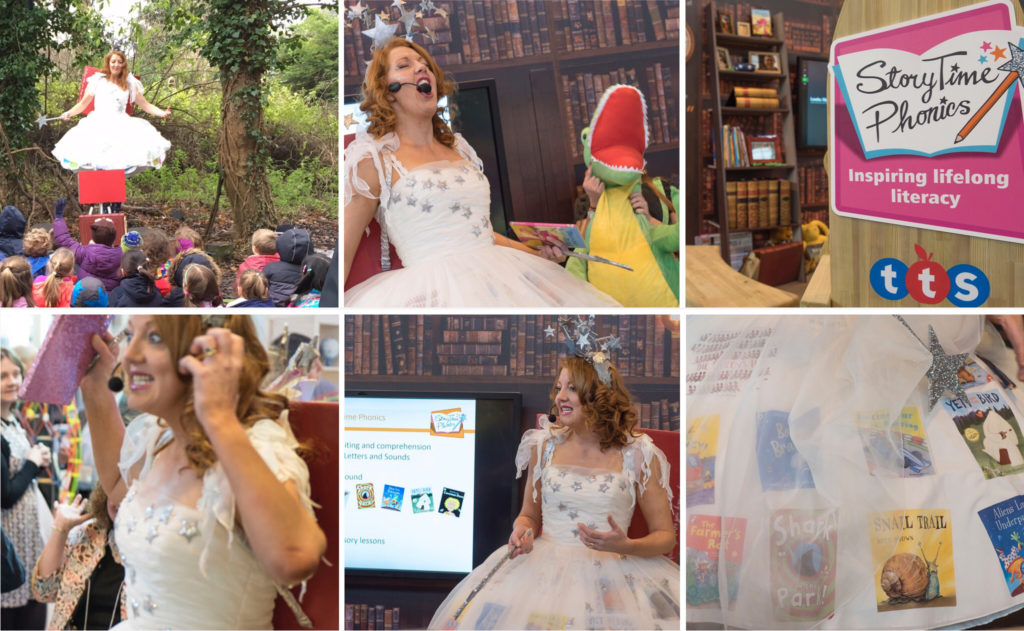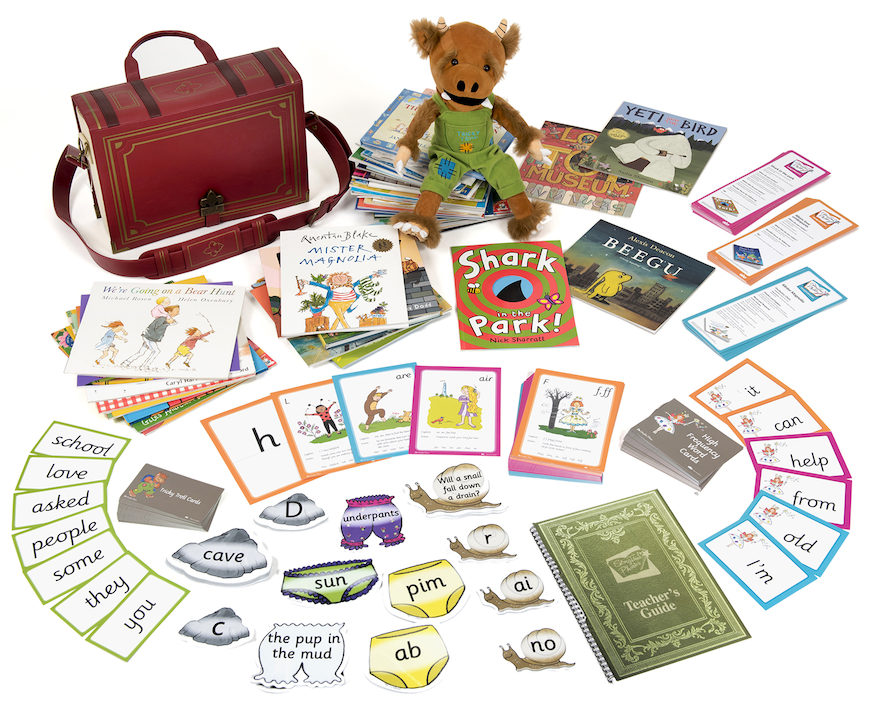This is what I tell the children who take part in my Phonic Fairy lessons. I tell them I am that fairy. I tell them I have come to share my love of stories. I tell them that if they ever find dust on a book, they should take it into a shaft of light. If the dust glitters and sparkles, then it means I have been inside reading, maybe transforming into the characters for fun, travelling to various locations, travelling into another world.
“Are you really a Fairy?” one of them will ask.
Well, how do you begin to answer that? Why don’t they listen to the story, I say, once they’re in the story, they’ll know that I am a fairy, because there will be magic happening all around them. Some of them don’t quite believe me, but there’s a little bit of everyone that can’t help playing along.
I read to the children – real books by a range of over fifty amazing authors like Nick Sharratt, Allen & Janet Albhurg, Quentin Blake, Michael Rosen and Mini Grey. And now, now there’s nothing these children can’t do. They are captivated in the stories and their brains are bubbling over with words and language and learning. Listen to the rhythms, listen to the rhymes, listen to the patterns. What will happen next? Where will they go, what will they see?

Copyright © 2007 Usborne Publishing Ltd, From THE DINOSAUR WHO LOST HIS ROAR by Russell Punter, Reproduced by permission of Usborne Publishing Ltd, www.usborne.com
In reality, I have had the most incredible job over the last couple of years. I have been working to create videos for a reading programme I have developed based on a love of literature, using systematic teaching of phonics alongside wonderful books by some of the best authors in the UK. I play the Phonic Fairy who lives in libraries on bookshelves. I fly into fabulous books (with the help of my book wings) and turn into characters travelling to exciting locations.
At the end of each story I fly out of the book and use my magic pencil wand to teach the children how to write the focused sound. The Phonic Fairy uses her magic pencil wand to then teach the focused phoneme along with the Caption Action, to help children store the sounds into their long term memory. The lessons are fun and truly multi-sensory. For instance, while filming the lesson Shark in the Park by Nick Sharratt, I flew on a zip wire shouting ‘ar’ like Tarzan. Children adore and remember the concepts, they laugh out loud and more importantly connect reading with pleasure.
I am currently creating a further range of school-based videos, demonstrating how the Phonic Fairy can translate into real teaching in real schools with real pupils. These videos should support teachers to develop their own teaching of phonics, using the StoryTime phonics programme.
Reading is the most important skill of a child’s life; I hope to give every child their own set of book-wings, because once they can read, they will fly too. Some of the children I teach believe that I was that little girl, wobbling dangerously on top of the stool. In a way, I was. And in a way, these children are too, and I just hope that they get to be part of the magic of reading.
For more information on Storytime Phonics click here
For more ideas and inspiration about the love of phonics – also written by Michelle – please click on the links below:
For the Love of Phonics – Part 1 – why do we teach it?
For the Love of Phonics – Part 2 – why children need stories
For the Love of Phonics – Part 3 – why context is so important
Book credits:
From MISTER MAGNOLIA by Quentin Blake, Published by Red Fox, Reprinted by permission of The Random House Group Limited, London SW1V SA, www.penguinrandomhouse.co.uk
From SHARK IN THE PARK by Nick Sharratt, Published by Corgi Childrens, Reprinted by permission of The Random House Group Limited, London SW1V SA, www.penguinrandomhouse.co.uk
From BEEGU by Alexis Deacon, Published by Red Fox, Reprinted by permission of The Random House Group Limited, London SW1V SA, www.penguinrandomhouse.co.uk
From YETI & THE BIRD by Nadia Shireen, Published by Atheneum Books for Young Readers, Reprinted by permission of The Random House Group Limited, London SW1V SA, www.penguinrandomhouse.co.uk
Text Copyright © 1989 Michael Rosen, Illustrations Copyright ©1989 Helen Oxenbury, From WE’RE GOING ON A BEAR HUNT by Michael Rosen, illustrated by Helen Oxenbury, Reproduced by permission of Walker Books Ltd, London SE11 5HJ, www.walker.co.uk
From LOST IN THE TOY MUSEUM by DAVID LUCAS, Reproduced by permission of Walker Books Ltd, London SE11 5HJ, www.walker.co.uk




